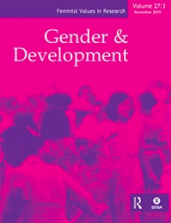Women’s empowerment for disaster risk reduction and emergency response in Nepal

Overview
It is generally accepted that women overall are more vulnerable to disaster risk and have specific needs during a crisis. But in Nepal, social taboos and norms restrict women’s freedom to express their needs to humanitarian workers in times of crisis, as these are normally strangers to the community deputed by humanitarian agencies or state agencies. These norms are deep-rooted in Nepal and other South Asian countries, and they increase the vulnerability of women to disaster risks, be they natural or man-made. In this context, starting in 2008, the Disaster Risk Reduction and Humanitarian programme (DRR-HP) in Nepal has introduced Women’s Empowerment as a key component of community-based disaster risk reduction interventions in different DRR-HP projects. Altogether, 42 Women’s Empowerment Centres (WECs), each with 30 women participants, have been supported to lead DRR and emergency response work in their local communities. The WECs have become a successful way of reducing socio-economic and physical vulnerability in the community, as well as an important means of strengthening women’s empowerment and leadership.
This article is hosted by our co-publisher Taylor & Francis. For the full table of contents for this and previous issues of this journal, please visit the Gender and Development website.
Additional details
Author(s)
How to cite this resource
Citation styles vary so we recommend you check what is appropriate for your context. You may choose to cite Oxfam resources as follows:
Author(s)/Editor(s). (Year of publication). Title and sub-title. Place of publication: name of publisher. DOI (where available). URL
Our FAQs page has some examples of this approach.



